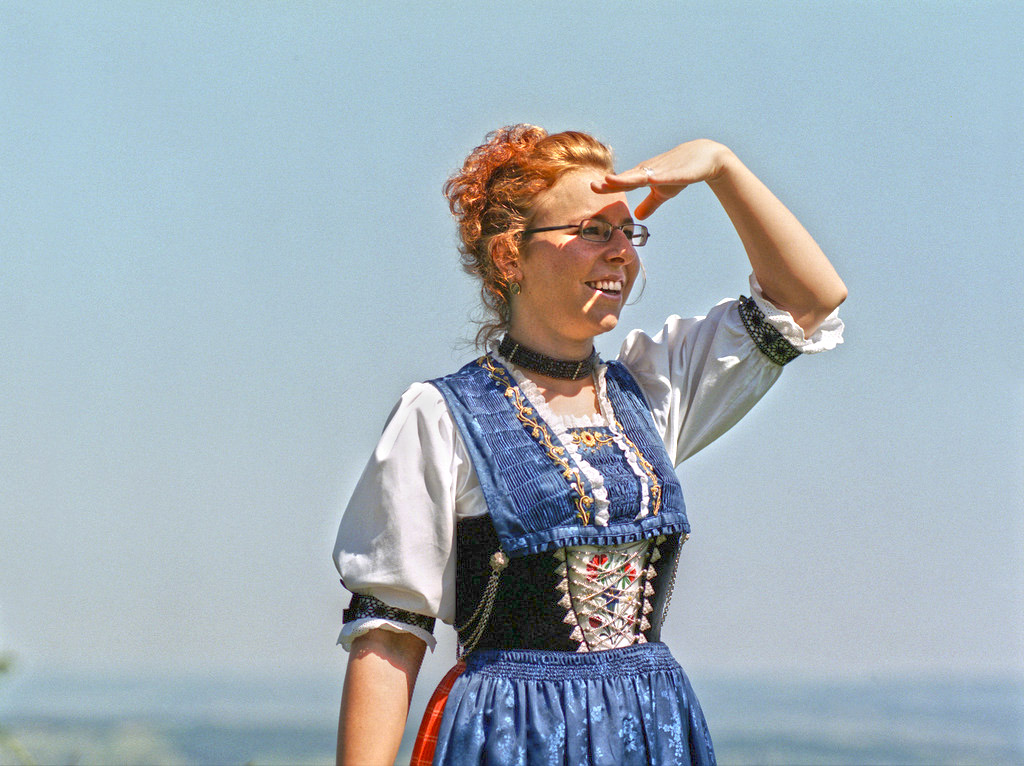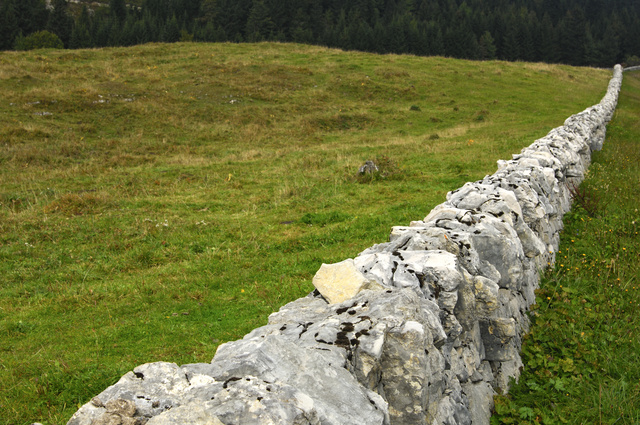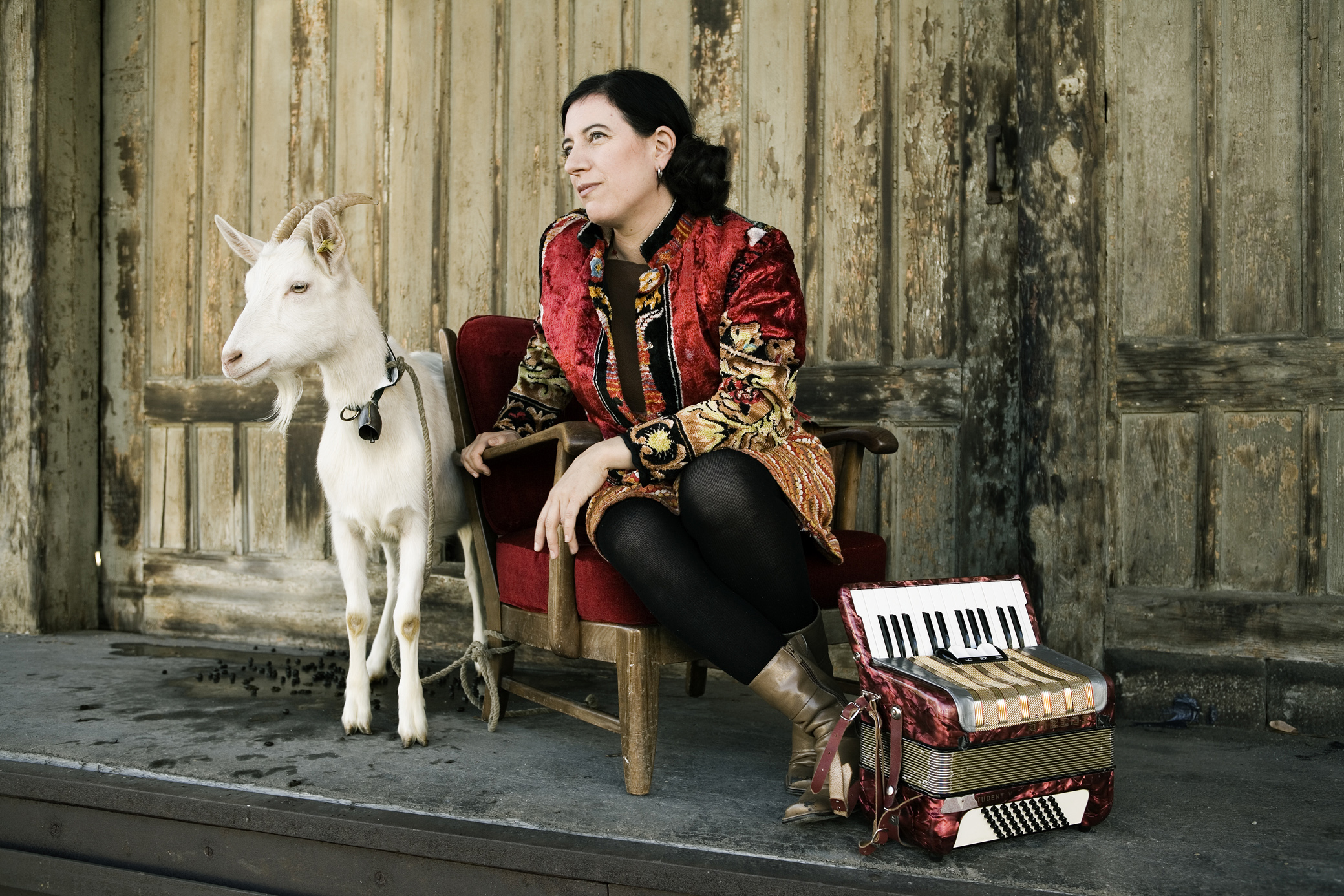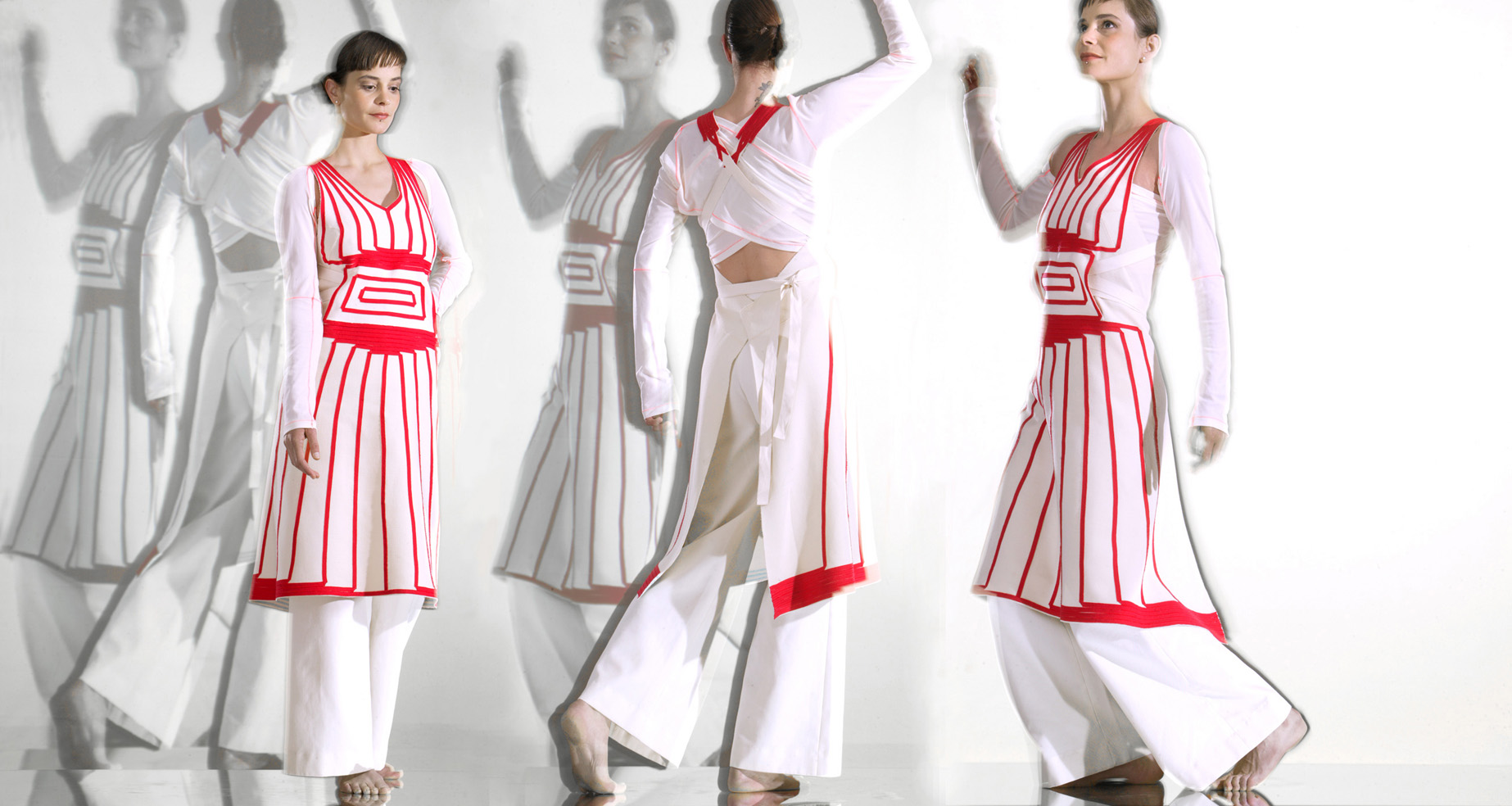Folk musicians seek inspiration beyond the norm

It’s crowded in the dressing room. And no wonder. A folk trio, a jazz singer and a classically-trained violinist are all relaxing before a joint show. Such genre-bending is common in Swiss folk music today - as is a back-to-roots shift.
Laid out on stage for the sold-out concert in Stans are two semi-circles of diatonic accordions – or Schwyzerörgeli – the century-old hallmark of Swiss traditional music. But instead of old standards this musical collective is premiering a new album of reinterpreted folk songs in Romansh, Switzerland’s minority language, and Swiss German.
It was the idea of charismatic actress and singer songwriter Corin Curschellas, who after years of living abroad was keen to rediscover her roots. She dipped into an archive of 2,000 songs collected by one man, Alfons Maissen, who in the 1930s travelled around asking villagers to sing their local songs. (See infobox)
“It’s a collection of incredible pearls,” Curschellas tells swissinfo.ch. She approached crossover folk trio Pflanzplätz and violinist Andy Gabriel to help reinterpret 22 songs, and “bring them back to life”.

More
A traditional song revived
Crossover
Both Pflanzplätz and Gabriel are used to working with different styles; Pflanzplätz’s members with rock, jazz and dance, among others, while Gabriel improvises in everything from pop to classical.
Why? “Interplay and exchange and interesting input,” says Simon Dettwiler, Pflanzplätz’s oldest member. “It’s also a question of sound. The Swiss diatonic accordions are different but sound like an accordion. When you have a violin, a singer, a cymbal, a clarinet, it opens the sound.”
Crossover groups like these are one of the areas into which Swiss folk music has splintered over the years, alongside traditionalist and the avant-garde. In a recent development, a growing number of young musicians have been looking back, reinventing styles from a century ago.

More
Instrument unites traditional and techno
More competition
Folk music has been mixing it up with other styles throughout its history but for the first time such collaborations are being ‘institutionalised’ with a special folk music module on offer for jazz and classical degree students at Lucerne University of Applied Sciences and Arts.
Course coordinator Daniel Häusler says the main impulse was to provide training in traditional instruments such as the diatonic accordion and the hammered dulcimer. But the course isn’t there to turn jazz students into folk musicians, he says.
“Every musician has to find his own way. There are many successful folk musicians who are self-taught. We simply offer students as comprehensive a training as possible so they can handle any challenges they might encounter as a folk musician.”
Skills such as memorisation and improvisation are taught and benefit jazz and classical students, he explains.
The course is still in its early days. But its presence has been noted across the folk music scene.
Dieter Ringli, a ethnomusicologist who wrote a definitive guide to Swiss folk music in 2005 and today lectures on various music styles, tells swissinfo.ch: “It will bring more better educated musicians, but I don’t know if the music will be better. We’ll see.”
He says some amateur folk musicians are worried about the course and are afraid they won’t be able to compete with professionals.
It’s hard to make a living out of folk music today, he adds. “Most of these non-professional musicians play for food, beer and CHF50 or so. But you cannot live from that. Maybe these courses will change the whole scene a bit but they are too new to judge yet.”
At the same time, there is also anticipation about what such a course could bring. “It’s really, really great,” says yodeller Nadja Räss. “If you look abroad to Scandinavia or Austria, there is more folk in daily life. In Finland you have been able to study folk music for 20 years now. Now we have a chance to study in Lucerne. Maybe in 20 years we will be like Finland.”

More
Breaking the mould as a Swiss yodeller
Back to the roots
Räss now gives courses of her own, teaching yodelling to children in week-long camps and to company CEOs and managers as a “form of communication”.
It’s part and parcel of a back-to-roots movement underway. And not only in music, she says.
It’s something Dieter Ringli has also observed. Thirty years ago “absolutely” no one in Swiss cities listened to Swiss folk music – “the whole left scene found this kind of music terrible” – but that changed in the last 15 years.
“People were listening to folk music from the whole world and then asked themselves if there was anything in Switzerland. This is a trend you can also see in other fields – going back to local traditions. With beer for example. Twenty years ago we drank beer from everywhere in the world, and now we have breweries in every village producing a local beer. It’s a trend you can also see in music.”
At the start of the 20th century Swiss folk musicians played tunes from Switzerland and abroad, but they did so in a “special, local style”.
“And now there are a lot of young people trying to discover these older styles. But they don’t play it like it was 100 years ago,” said Ringli. “People are now more technically educated. Some young people try to keep it pure and others try to mix with contemporary sounds and ways of playing.”
Nadja Räss is one of the musicians trawling through old archives. “I listen closely to old recordings. In yodelling now we only use ‘yu’ and ‘yo’. One hundred years ago they used ‘e’, ‘eh’, ‘a’, ‘eu’, some really different vowels and that’s more interesting to sing. For me it’s interesting to look for this old but also new vocalisation.”
In a way musicians are going back to look forward. Swiss folk musicians have been playing catch up since traditional music became tightly organised in the 1960s by those who felt it needed to be protected from change. Strict rules were laid out for anyone wanting to be a part of folk music organisations or to enter their competitions.
Such regulations have come to be seen by some as a straightjacket for creativity. “But I think we are heading in a good direction now,” said Räss. “There is a traditional way to make folk music and a possibility of a freer use of folk music.”
“I think folk music in Switzerland was interesting in each age,” added Pflanzplätz’s Simon Dettwiler. “Clearly the public is more interested in it now. But whether it’s more interesting than 100 years ago, I don’t know.”
In searching for old Romansh songs to reinvigorate, singer songwriter Corin Curschellas stumbled upon an archive of around 2,000 songs amassed by collector Alfons Maissen in the early 1930s.
Maissen had travelled around asking old villagers to sing their songs. An archive of the works has been put together in the past five years.
Curschellas teamed up with Pflanzplätz and Andy Gabriel to reinterpret 22 of the songs for an album, Origins, out this year. It includes Romansh songs in five idioms and some Swiss-German songs.
Folk music today has no clear-cut definition and is loosely known as traditional music that is handed down orally. Ethnomusicologist and author of a book on Swiss folk music Dieter Ringli defines it as music in which it is possible to hear where it originated.
Over the last century the Swiss folk music scene has branched out in several different directions. It became structured just over 100 years ago with the founding of the Federal Yodelling Association, which published traditional tunes and new compositions and introduced strict rules for players. The resulting Ländlermusic (a general term for traditional rural music) was used as part of the government’s patriotic propaganda in the Second World War and grew in popularity, and over time this form became more standardised and was seen as a way of preserving tradition.
At the same time Swiss folk music continued to branch out. It now ranges from Schlager music, best known for its populist bands shown on television in German-speaking countries, to more commercial traditional folk (such as Oesch’s “die Dritten” and Jodlerklub Wiesenberg), to a strong crossover folk scene combining with other instruments and styles, and avant-garde folk. Today a growing number of musicians are also working at reinterpreting old styles from the early 20th century.
(Sources: Dieter Ringli, Swiss Arts Council, Swissworld.org)
(With input from Christian Strickler)

In compliance with the JTI standards
More: SWI swissinfo.ch certified by the Journalism Trust Initiative




You can find an overview of ongoing debates with our journalists here. Please join us!
If you want to start a conversation about a topic raised in this article or want to report factual errors, email us at english@swissinfo.ch.